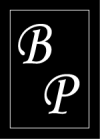
3 Essential Elements Of A Book’s First Page
If you’re a writer with publishing goals, then you know how important it is that the literary agents or editors reading your material keep reading. After all, if your submission doesn’t hook the reader right away, there are plenty of other submissions to take its place. With that in mind, we’ve outlined three major elements that make or break a piece in the first few pages so that you can make sure you’re submitting the best short story, essay, or book query possible.
1. Character
Any character you present in the opening pages of your essay, short story, or book manuscript should be intriguing. Don’t waste any time; show the reader quickly why it’s worth getting to know the character.
2. Opening Action
To quickly hook your reader, focus in on an intense and important moment. This doesn’t have to be a flashy, shocking scene—and shouldn’t be unless truly appropriate.
3. Setting
Choosing a unique, unexpected, extraordinary setting will give you the automatic bonus of a higher interest factor in your opening pages.
Continue reading @ Huffington Post Books







